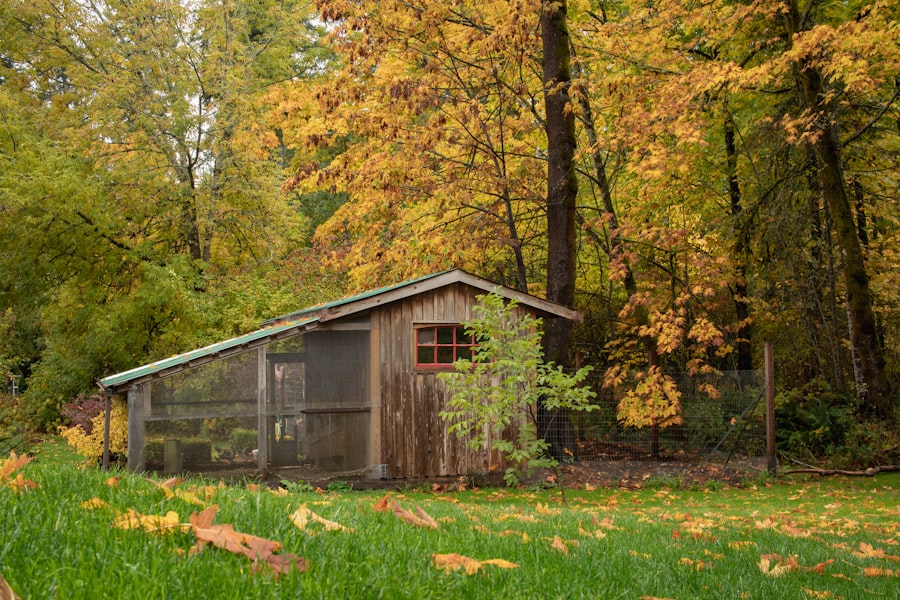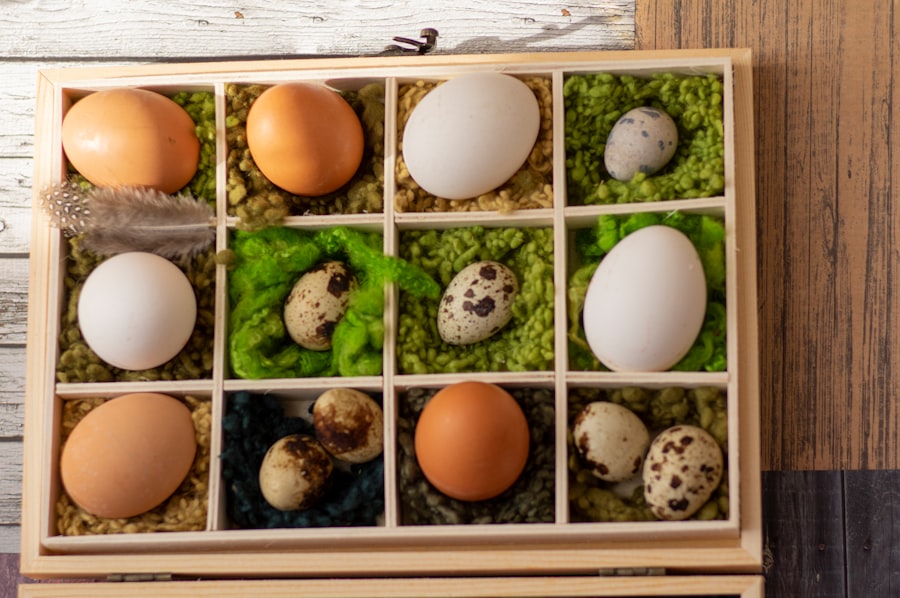The quarantine period for new chickens is a critical practice in poultry management. It involves isolating newly acquired birds for a specified duration before integrating them into an existing flock. This process serves multiple purposes:
1. Disease prevention: Quarantine helps prevent the transmission of pathogens between new and existing birds. 2. Health monitoring: It allows for close observation of new chickens to detect any signs of illness or abnormal behavior. 3. Stress reduction: The isolation period gives new birds time to adjust to their new environment gradually. 4. Biosecurity: Quarantine is particularly important when chickens are sourced from different locations, as they may carry varied pathogens. 5. Flock compatibility assessment: This period provides an opportunity to evaluate the temperament and social behavior of new chickens. 6. Bonding opportunity: Caretakers can use this time to familiarize themselves with the new birds. 7. Preventive care: Any health issues identified during quarantine can be addressed before the birds join the main flock. The quarantine process is fundamental to maintaining overall flock health and ensuring a smooth integration of new chickens. It is a proactive measure that helps mitigate potential health risks and social disruptions within the existing flock.
Table of Contents
- 1 Duration of Quarantine
- 2 Monitoring for Signs of Illness
- 3 Introducing New Chickens to the Flock
- 4 Providing Enrichment and Socialization
- 5 Gradual Integration into the Coop
- 6 Tips for a Smooth Transition
- 7 FAQs
- 7.1 What is the recommended time to keep new chickens locked up?
- 7.2 Why is it important to keep new chickens locked up for a certain period of time?
- 7.3 What are the benefits of keeping new chickens locked up for a period of time?
- 7.4 How can I ensure that my new chickens are comfortable while being locked up?
Key Takeaways
- Quarantine period is crucial for preventing the spread of diseases among chickens
- The recommended duration of quarantine is at least 30 days
- Regular monitoring for signs of illness during quarantine is essential
- Introducing new chickens to the flock should be done gradually and with caution
- Providing enrichment and socialization can help new chickens adjust to the flock more easily
- Gradual integration into the coop is important to prevent aggression and pecking order issues
- Tips for a smooth transition include keeping the new chickens separate but within sight of the existing flock, and providing separate feeding and watering stations.
Duration of Quarantine
Why 30 Days?
This timeframe allows for any potential illnesses or parasites to manifest and be treated before introducing the new chickens to the rest of the flock. However, in some cases, it may be necessary to extend the quarantine period if there are any signs of illness or if the new chickens require additional time to acclimate to their new environment.
Separation is Key
It’s essential to keep the new chickens in a separate area from the existing flock during the quarantine period to prevent any potential spread of diseases or parasites. This can be a separate coop or a designated section of your existing coop that is completely enclosed and separate from the rest of the birds.
Biosecurity Measures
During the quarantine period, it’s crucial to practice good biosecurity measures, such as changing clothes and washing hands between handling the new and existing chickens, to prevent any potential transmission of diseases. By adhering to a thorough and extended quarantine period, you can ensure the health and safety of your entire flock.
Monitoring for Signs of Illness

During the quarantine period, it’s important to closely monitor the new chickens for any signs of illness or behavioral issues. This includes observing their eating and drinking habits, as well as their overall activity level and demeanor. Any changes in behavior or appearance should be noted and addressed promptly to prevent any potential spread of illness to the rest of the flock.
Common signs of illness in chickens include lethargy, decreased appetite, abnormal droppings, respiratory issues, and changes in feather condition. It’s important to keep a close eye on the new chickens for any of these symptoms and consult with a veterinarian if any concerns arise. Additionally, regular health checks, such as weighing the chickens and checking for mites or lice, should be conducted during the quarantine period to ensure that the new birds are in good health before introducing them to the rest of the flock.
Introducing New Chickens to the Flock
Once the quarantine period is complete and the new chickens have been deemed healthy, it’s time to introduce them to the existing flock. This should be done gradually to minimize stress and potential conflicts between the birds. One method for introducing new chickens is to place them in a separate enclosure within the existing coop so that they can see and interact with the other birds without being able to physically interact with them.
This allows the birds to become familiar with each other without the risk of aggression or fighting. Another method is to introduce the new chickens to the existing flock during free-range time when they can interact in a larger space. This allows for natural interactions between the birds and gives them the opportunity to establish their pecking order without being confined to a small space.
It’s important to closely monitor these interactions and be prepared to intervene if any aggressive behavior occurs. By introducing new chickens gradually and in a controlled manner, you can help minimize stress and potential conflicts within the flock.
During the integration process, it’s important to provide enrichment and socialization opportunities for both the new and existing chickens. This can include providing toys, perches, and other forms of environmental enrichment to keep the birds mentally stimulated and prevent boredom. Additionally, spending time with the chickens and interacting with them can help build trust and establish a positive relationship between you and your birds.
Socialization between the new and existing chickens is also crucial for a smooth transition. Allowing them to interact during free-range time or supervised play sessions can help them establish their pecking order and form social bonds within the flock. Providing treats or food rewards during these interactions can also help create positive associations between the birds and reinforce their social bonds.
By providing enrichment and socialization opportunities, you can help reduce stress and promote positive interactions between the new and existing chickens.
Gradual Integration into the Coop

Establishing a Peaceful Coexistence
Once the new chickens have become familiar with the existing flock and have established their place within the pecking order, they can be gradually integrated into the main coop. This should be done during a time when there is minimal stress or disruption within the flock, such as during a calm evening when all of the birds are roosting. It’s important to closely monitor their interactions during this time and be prepared to intervene if any aggressive behavior occurs.
Preventing Competition and Conflict
It’s also important to ensure that there are enough resources, such as food and water stations, within the coop to prevent competition and potential conflicts between the birds. Providing multiple feeding and watering stations can help reduce stress and promote peaceful cohabitation within the coop.
A Smooth Transition for All
By gradually integrating the new chickens into the main coop and providing ample resources, you can help ensure a smooth transition for all of your birds. This careful approach will help minimize stress and promote a harmonious environment within the flock.
Tips for a Smooth Transition
In addition to following a thorough quarantine period and gradual integration process, there are several tips that can help ensure a smooth transition when introducing new chickens to your flock. Providing ample space within the coop and run area can help reduce competition and potential conflicts between the birds. Additionally, providing multiple feeding and watering stations can help prevent resource guarding and promote peaceful cohabitation within the flock.
It’s also important to closely monitor their interactions during this time and be prepared to intervene if any aggressive behavior occurs. Providing enrichment opportunities, such as toys and perches, can help keep the birds mentally stimulated and prevent boredom during this transitional period. Lastly, maintaining a clean and well-maintained coop environment can help reduce stress and promote overall health within your flock.
By following these tips and best practices, you can help ensure a smooth transition when introducing new chickens to your existing flock.
If you’re considering turning a shed into a chicken coop, you may want to check out this article on poultrywizard.com. It provides helpful tips and advice on how to repurpose a shed into a comfortable and functional living space for your new chickens.
FAQs
What is the recommended time to keep new chickens locked up?
The recommended time to keep new chickens locked up is typically 2-4 weeks. This allows them to acclimate to their new environment and reduces the risk of them wandering off or getting lost.
Why is it important to keep new chickens locked up for a certain period of time?
Keeping new chickens locked up for a period of time allows them to become familiar with their new surroundings, establish their home base, and become accustomed to their new coop and run. It also helps to prevent them from wandering off and getting lost.
What are the benefits of keeping new chickens locked up for a period of time?
Keeping new chickens locked up for a period of time helps to reduce stress, establish a routine, and allows them to bond with their new flock. It also helps to prevent them from encountering potential predators and reduces the risk of them contracting diseases from wild birds.
How can I ensure that my new chickens are comfortable while being locked up?
To ensure that your new chickens are comfortable while being locked up, provide them with plenty of space, fresh water, and high-quality feed. Additionally, provide them with enrichment activities such as perches, dust baths, and toys to keep them entertained.
Meet Walter, the feathered-friend fanatic of Florida! Nestled in the sunshine state, Walter struts through life with his feathered companions, clucking his way to happiness. With a coop that’s fancier than a five-star hotel, he’s the Don Juan of the chicken world. When he’s not teaching his hens to do the cha-cha, you’ll find him in a heated debate with his prized rooster, Sir Clucks-a-Lot. Walter’s poultry passion is no yolk; he’s the sunny-side-up guy you never knew you needed in your flock of friends!







